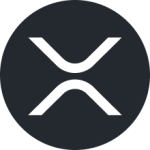XRP Ledger – A Distributed Ledger Technology, Smart Contracts and Interoperability Evolution
August 1, 2024
Much like a Charles Darwin based evolution model, incantations of a distributed ledger system could have started when David Schwartz (now with Ripple) lodged a patent describing a “Multilevel distributed system for distributed processing preferably includes a plurality of personal computers”. Was this the moment a decentralised distributed computing ledger technology came to life from its technological evolving primordial ooze? Let’s discuss the birth, growth and evolution of the XRP Ledger technology.
The story of the XRP Ledger begins with Ryan Fugger, a web developer deeply interested in decentralised systems. In 2004, he founded the original Ripple project, aiming to create a new monetary system rooted in the trust, found in social and business relationships. Fugger’s idea materialised in 2005 with the launch of RipplePay, a financial service that allowed users to extend credit lines to their friends, family, and associates and make secure payments in traditional and online currencies.
Fugger’s health issues caused his work on RipplePay to stagnate. In 2012, Jed McCaleb, David Schwartz, and Arthur Britto, who were working on OpenCoin, approached Fugger with their idea. Recognising their shared vision, Fugger agreed to let them carry on the Ripple project. OpenCoin aimed to create a more efficient and less energy-intensive version of Bitcoin, initially focusing solely on XRP and later incorporating trust lines and multihop payments, key elements of Fugger’s original concept.
McCaleb, Schwartz, and Britto, along with Chris Larsen who joined them, launched their blockchain in 2012, with Schwartz serving as the chief cryptographer. By 2013, XRP was fully incorporated into OpenCoin, designed to act as a bridge currency for different financial institutions to facilitate faster cross-border transactions. Unlike Bitcoin, all 100 billion XRP that will ever exist were created from the start, with Ripple holding the majority. This control over the supply contrasts with other cryptocurrencies, where supply is determined by mining and trading flow. In 2017, due to community concerns, Ripple created an “Escrow” function for the XRP supply it had stewardship over.
“To provide additional predictability to the XRP supply, Ripple has locked 55 billion XRP (55% of the total possible supply) into a series of escrows. These escrows are on the ledger itself and the ledger mechanics, enforced by consensus, control the release of the XRP.
The escrow consists of independent on ledger escrows that release a total of one billion XRP each month over the next 55 months. This provides an upper limit on the amount of new XRP that can be brought into circulation. The amount of XRP actually released into circulation will likely be much less than this. Any additional XRP leftover each month will be placed into a new escrow to release in the first month in which no escrow currently releases.
During the process of moving Ripple’s XRP into escrow, we also changed our account security model. The XRP Ledger supports a native multisign scheme and Ripple secured the accounts the escrows release into using this scheme.
The multisignature scheme has numerous advantages over the schemes other ledgers use. For example, the signers or quorum can be changed without changing the receiving address. Individual signers can rotate their own credentials without disturbing the funds on the ledger.”
Following its official creation in 2012, the XRP Ledger has had an interesting journey with regards to smart contracts. Let’s discuss its early beginnings.
Presently, in the blockchain world, smart contracts have become crucial in blockchain technology testing and adaption by institutional level participants. We’re talking banking, trade, data and tokenised solutions.
Interestingly, Ripple’s journey with smart contracts began in 2013 when Schwartz and Evan Schwartz developed a prototype called ripplevm. This evolved with Stefan Thomas in 2014 into the Codius project, a smart contract system offering flexibility by allowing developers to use common programming languages like C++, Java, and JavaScript. However, the project faced challenges, which instead led to the development of the Interledger Protocol (ILP) to facilitate cross-ledger payments. An interesting side story was recalled by Stefan Thomas:
“Later in 2013, a young Bitcoin developer crashed on my couch for a couple of weeks while visiting San Francisco. In the afternoon, he would come to the Ripple office and join our discussions about smart contracts. His name was Vitalik Buterin. And these conversations led him to incorporate Ripple’s key/value data structure into Ethereum.
People often ask why we didn’t release our prototype, pre-empting Ethereum and potentially attracting developers to XRP instead. At the time, we underestimated the amount of interest there would be in smart contracts. Moreover, building this architecture seemed daunting — hats off to Vitalik and friends for attracting a community large enough and fervent enough to pull it off.”
For reference, on 30 July 2015, “Frontier” marked the official launch of the Ethereum platform, and Ethereum created its “genesis block”. The genesis block contained 8,893 transactions allocating various amounts of ether to different addresses, and a block reward of 5 ETH.
Ripple has made significant strides in expanding the use and interoperability of the XRP Ledger (XRPL). One of the latest developments is the XRPL EVM Sidechain, aimed at making XRPL compatible with the Ethereum Virtual Machine (EVM). This move responds to the developer community’s requests for broader web3 product integration and digital asset adoption. The XRPL EVM Sidechain, launching on the Axelar network, will facilitate real-world asset tokenisation, a field gaining traction among institutional investors and retail traders.
Axelar’s network, with its 75 validators and strong security measures, will ensure the safe integration of the XRPL EVM Sidechain. Wrapped XRP (eXRP) will be used for fee payments, enhancing blockchain interoperability. Ripple’s partnership with Peersyst aims to migrate the main bridge to Axelar, further strengthening this initiative.
Ripple’s Expansion and Strategic Partnerships
Ripple has been proactive in expanding its product offerings globally amid the rising adoption of digital assets. The acquisition of crypto custody firms Standard Custody and Metaco is part of this strategy. Despite ongoing legal battles with the U.S. Securities and Exchange Commission (SEC), Ripple continues to innovate, unveiling a roadmap for DeFi adoption on the XRPL network. This includes introducing an Automated Market Maker, Decentralised Identities, Oracles, Multi-Purpose Tokens, and a native lending protocol.
Ripple is also working on launching a U.S. dollar-backed stablecoin called RLUSD on the XRPL and Ethereum networks. The XRPL EVM Sidechain will play a crucial role in mainstreaming these stablecoins and native web3 projects. Ripple’s collaboration with Axelar aims to enhance XRPL’s utility and reach by enabling seamless interoperability across various blockchain networks. This partnership will allow developers to leverage XRPL’s built-in features, such as the native DEX and the upcoming AMM, to deploy cross-chain dApps.
Another significant partnership is with Evmos, where Ripple is building the XRPL EVM Sidechain using evmOS on the Cosmos Software Development Kit (SDK). This integration connects XRPL to nearly 100 interconnected networks and thousands of dApps, expanding its ecosystem significantly. The ready-to-launch tech stack includes features geared towards EVM implementation, such as access to the dApp store, IBC functionality, and EVM extensions.
Ripple’s collaboration with Cosmos further emphasises the importance of interoperability. The XRPL EVM Sidechain, leveraging evmOS, will join the Interchain, offering XRPL users access to a vast network of interconnected blockchains and web3 apps. This initiative aligns with Ripple’s vision to expand its market share in decentralised finance (DeFi) and tokenisation, moving beyond its original focus on payments.
From its inception by Ryan Fugger to its current expansion under Ripple Labs, the XRP Ledger has evolved significantly. Its journey reflects the broader trends in the blockchain industry, emphasising the importance of interoperability and integration. Through strategic partnerships and innovative developments, Ripple continues to push the boundaries of what the XRP Ledger can achieve, positioning it as a critical player in the evolving digital economy. Ripple is expanding its use of the XRP Ledger and native XRP token from just being payments focussed, to seeking significant market share of decentralised finance (DeFi) and Tokenisation. Interoperability has been a focal point Ripple and the XRP Ledger since the concepts of Codius and the Interlegder Protocol (ILP) in 2014. It continues to evolve with new partnerships and collaborations to bring use case, adaption and value to the XRP Ledger and XRP digital asset. The XRPL’s growth story is a testament to the potential and staying power of blockchain technology to revolutionise financial systems into the future.
About Ainslie Crypto:
Considering securing your cryptocurrency trading, purchasing, or exchanging strategies? Join us here or connect with Ainslie Crypto’s team at 1800 296 865 or via info@ainsliecrypto.com.au. We offer dedicated, personalised ‘human to human’ assistance to ensure the seamless, secure integration of cryptocurrency into your portfolio, whether for personal investment, business strategy, or your Self-Managed Super Fund (SMSF). Ainslie has been a trusted dealer and custody provider for Gold 1.0 for 50 years and has brought the same service to Gold 2.0, Bitcoin, since 2017.
Unchain yourself on-chain.
Want to swap directly between bullion and crypto? Ainslie seamlessly provides swaps between these two hard assets.
At Ainslie, our commitment extends beyond just transactions. We specialise in providing secure digital wealth protection. Our robust crypto custody services are backed by rigorous, real-time internal audits, ensuring your investments are not only secure but also managed with the highest standard of care and expertise. You can always see your own segregated wallet address and balance, value and trade history. Trust Ainslie Crypto to be your partner in navigating the dynamic world of digital assets, where we blend human insight with advanced technology to deliver a service that stands apart in the industry.
Share this Article:
Crypto in your SMSF
Top Movers
Get Started Trading Crypto with Ainslie.
Join Thousands of satisfied customers who trust Ainslie for their cryptocurrency and bullion needs.





